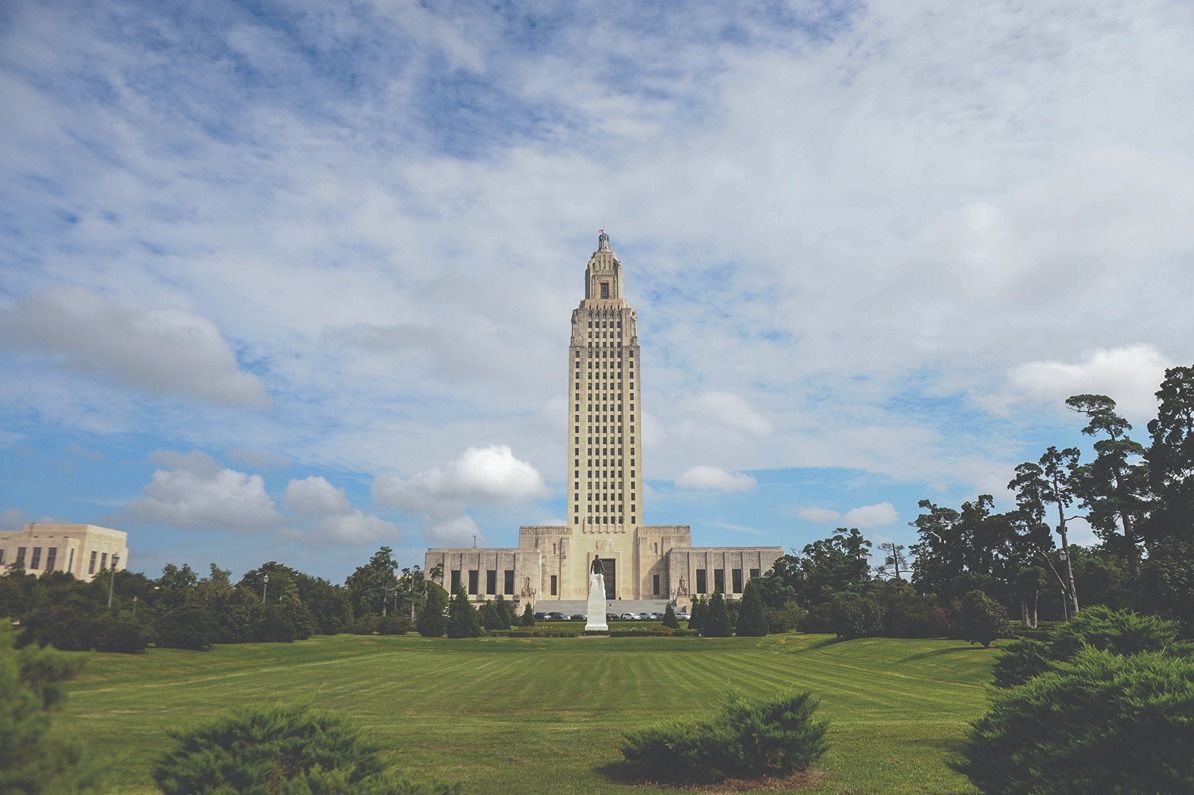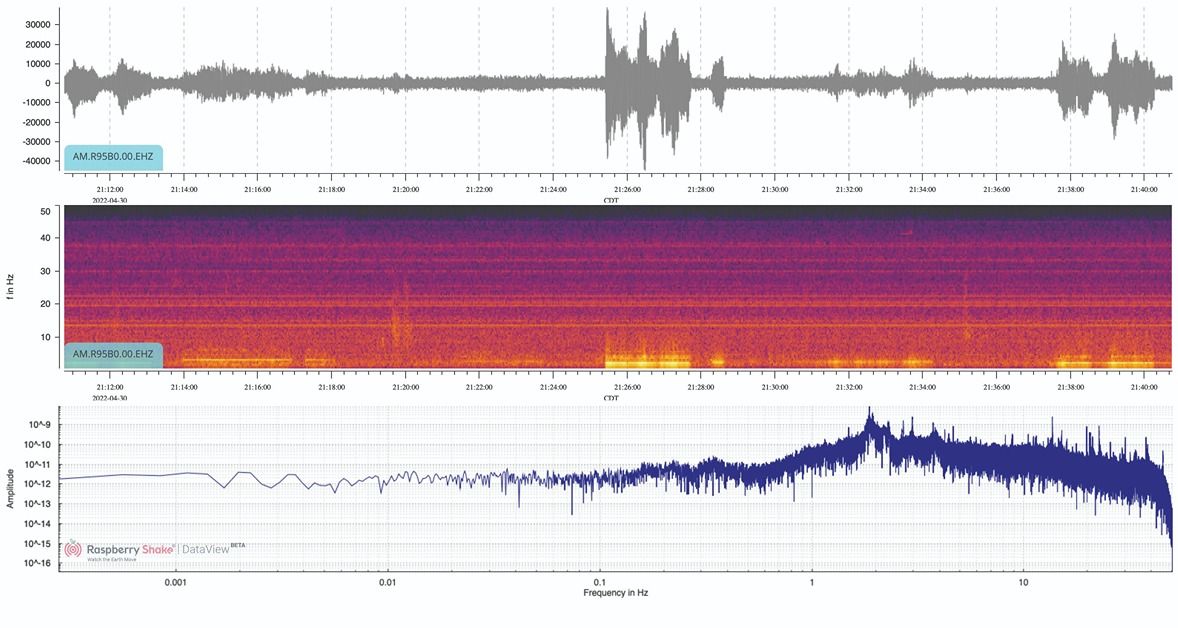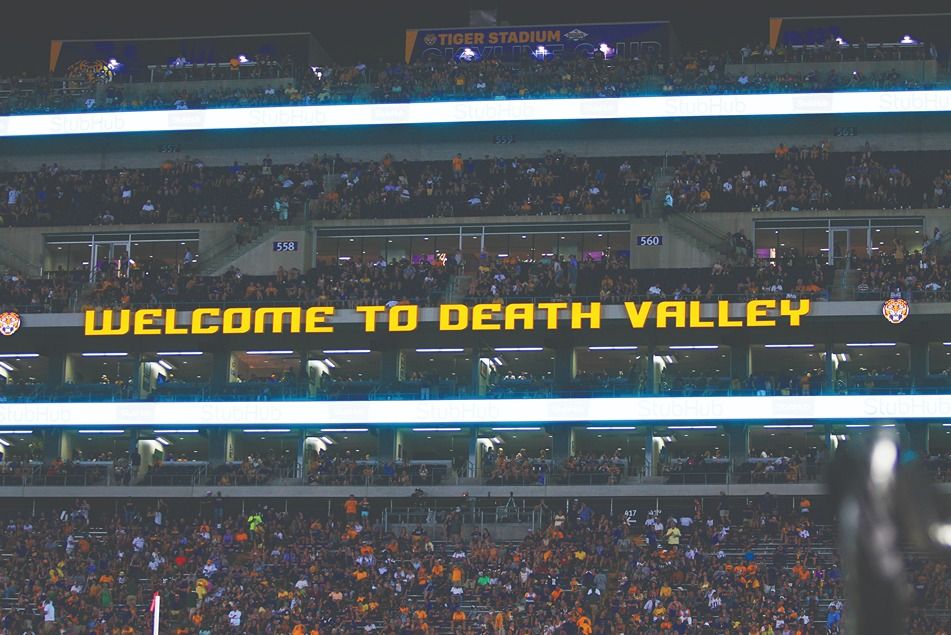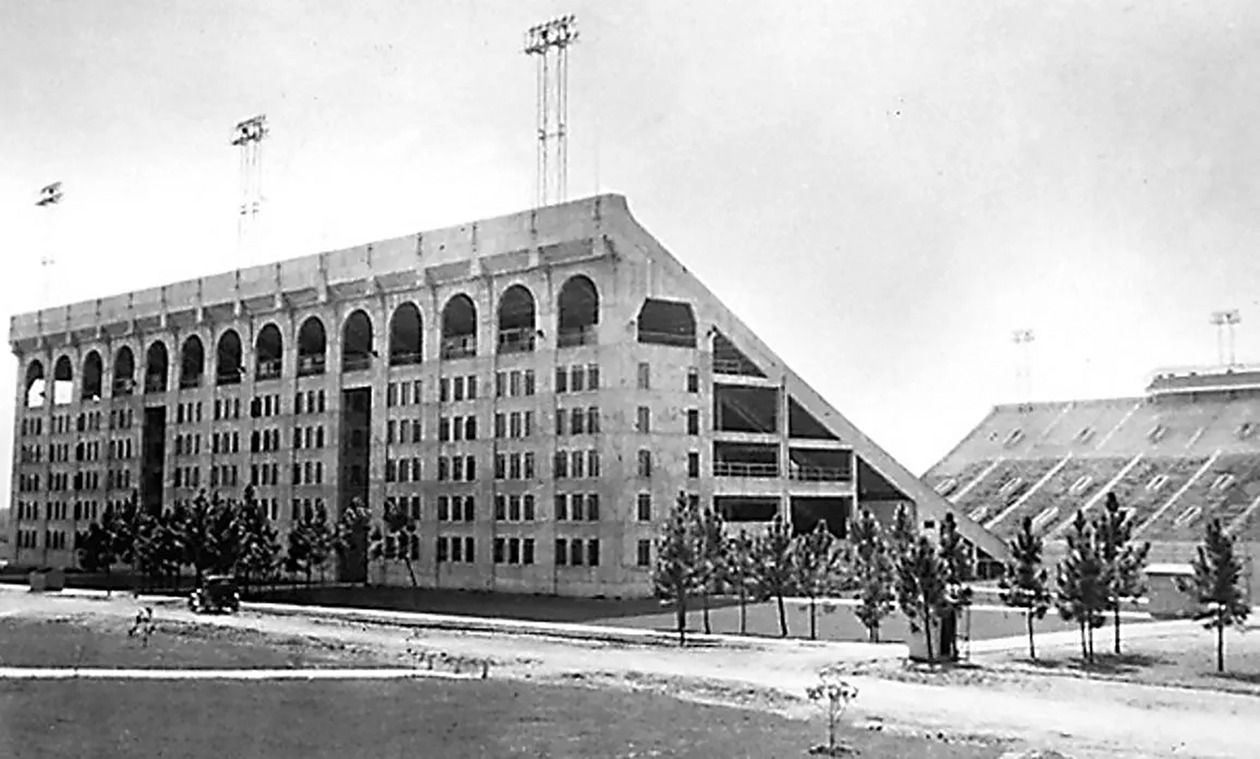For Louisiana State University Tigers football fans, 'tis the most wonderful time of the year. And like all magical seasons, the faithful fans delight in relating tales both legendary and miraculous. Here are ten tall tales that may be ready for prime time…
1. Tiger Stadium is the Louisiana State Capitol Building.

No, but it's not far off. When Gov. Huey Long could not secure financing to expand LSU's campus, he arranged to purchase LSU's State Field from the downtown campus for land to construct the new Louisiana State House—which sits on the Tigers' previous football field.
2. There have been earthquakes in Tiger Stadium during games.

While there have been two reported seismic events at Tigers stadiums, they do not seem to be a result of forces of nature.
LSU's geosciences department recorded an "earthquake" during the Garth Brooks concert at Tiger Stadium on April 30, 2022 while he sang "Callin' Baton Rouge." The 1993 song has become an unofficial anthem at LSU games, so it was little surprise that over 102,000 fans' cheering literally shook the stadium.
According to Baton Rouge ABC affiliate WBRZ, it was "only the second time in 33 years a seismograph picked up shaking from the stadium. The other time was at the end of the LSU-Auburn football game in 1988."
This game against the number 4 Auburn Tigers, known as "the Earthquake Game," is when the LSU Tigers upset their rival with a fourth-down touchdown pass by Tommy Hodson late in the fourth quarter to secure a 7-6 win. The fan frenzy registered on a LSU seismograph and is preserved by the Louisiana Geological Society.
3. Tiger Stadium is the biggest stadium in football.
Close but no cigar. Tiger Stadium seats 102,321, making it the third largest stadium in the Southeastern Conference (SEC), sixth largest stadium in the NCAA, and the eighth largest stadium in the world.
The Tigers played home games at State Field, on LSU's old downtown Baton Rouge campus, until 1924, at which point a new stadium was built on-campus at a cost of $1,816,210.58 (2022 value, $35.5 million), with an opening day capacity of 12,000. Another 10,000 seats were added to the grandstands in 1931. In 1936, the capacity more than doubled, creating the horseshoe seating with 24,000 seats in the north end zone. It completed the circular configuration into a bowl in 1953, and added an upper deck in 1978. Renovations and expansions have brought the stadium to its current capacity.
4. LSU plays more day games because Tigers statistically play better.
Actually, LSU prefers night games in Tiger Stadium.
"Tiger Stadium is well known nationally for having among the best game day atmospheres in college football," according to primidi.com.
The cynical view is LSU seems to be struggling against televised games played in the afternoons having higher ratings, versus a stronger winning record for their team (and players).
In his book The Mystique of Tiger Stadium: 25 Greatest Games: The Ascension of LSU Football, Chet Hilburn intimates, "The Tigers are apt to win more games at night in Tiger Stadium, but the university takes in much more revenue for a day game televised because the Southeastern Conference contract with the network is so lucrative."
5. Tiger Stadium is sometimes referred to as Deaf Valley.

Well, yes and no.
Games at Tiger Stadium became known as Deaf Valley because the enthusiastic fanfare was so loud it can be deafening. Former WGNO sports director laughed and said, "Visiting teams hated it because they couldn't even hear themselves, and sometimes even [the] plays [that were] called." In 2013, the NCAA ranked Tiger Stadium as the loudest stadium in college football.
However, legend has it the Death Valley name belonged to Clemson Tigers, supposedly because the college cemetery once overlooked the field—before their upper decks were constructed. As the story goes, in the 1959 Sugar Bowl against Clemson, LSU beat Clemson 7-0 to win the national title and the nickname. The Death Valley moniker has never wavered since.
"[Tiger Stadium] was like the Colosseum in Rome." said Georgia Tech's former coach, the late Coach Bobby Dodd about LSU's stadium, "and we were the Christians."
6. Students live in Tiger Stadium.

It used to be true.
Governor Long and new LSU athletics manager, Thomas "Skipper" Heard, devised an innovative way in which a $250,000 windfall to build dorms could expand housing and the football stadium at the same time. The east five-story dorms of Tiger Stadium were built in 1932, and the west in 1935—housing 1,500 students. In the process, they increased stadium seating capacity to 22,000.
Huey's brother, Governor Earl Long, campaigned to "close the horseshoe" by increasing dormitories, which also resulted in an additional 30,000-seat expansion.
During renovations throughout the campus in 1984, Tiger Stadium became a temporary housing gain. Over 500 windows and

